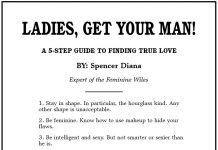The current screenplay I’m working on is a one-hour drama set in small-town Minnesota after the 2008 recession. It follows a Bengali-American girl wrestling with the typical teen angst fare (think My So-Called Life), coupled with the additional complications that come from being a second-generation immigrant caught between two worlds. It’s a love letter to the misfits and outsiders.
I have a few ground rules for myself when I’m working. The first is that I can’t listen to music produced after 2009 since it would be untrue to the time period I’m portraying. I’ve created a Spotify playlist titled “ipodshuffle” for this purpose, which contains all the music my main character would listen to on — you guessed it — her iPodShuffle.
When it comes to research, I make sure to know every minute detail of my character and the world she lives in. I know the books she’s reading in class and what her diary entries look like. I’ve spent hours scouring through yearbook photos of high school graduates online from 2009 to get a feel for popular hairstyles and makeup trends. To better underscore the recession and social context, I researched everything from #OccupyWallStreet to online youth subcultures on LiveJournal and MySpace. I do occasionally draw from some of my own experiences as a teenager but sparingly — I don’t want to over-insert myself into my characters since I want them to become their own individuals.
Before writing, I like to get in the zone by warming up. I either edit what I’ve written the day before or get to outlining. I personally think having a loose plot structure before writing saves time. I’d rather find out while planning my plot that something’s not clicking than when I’m already on page 50 and need to start over.
My main objective when first crafting a scene is to nail down the scene’s broad strokes and key plot points. That’s it.
Next, I start weaving in more subtle details in terms of characterization and subplotting. In later edits, I become more particular about capturing a character’s distinct manner of speech and behavior. One trick I like is covering each character name to see if I can still tell who’s speaking just from their dialogue. Another good rule of thumb is using dialogue to show who a character thinks they are and their actions to reveal who they actually are.
When I’m working on a story, I’m careful not to let the outside world seep into my headspace. I’m a devout believer in writing what you like and not what you think others will. I don’t bother chasing trends. With the sheer amount of time it takes to get a script produced, it’s possible that the trend I’d be trying to capitalize on isn’t even around anymore by the time my work is ready for pitching. The only real way for me to produce anything I’m half-proud of is by writing in a vacuum and not thinking about how others will receive it.
Whenever I get writer’s block, one of my favourite scenes to work on are arguments. On a practical level, they help me uncover intention and crystallize what exactly it is each character is fighting for. But really, I just find arguments ridiculously fun to write. I love the challenge of presenting two clashing perspectives and making someone in the wrong empathetic. There’s a reason why some of my favourite teen TV heroines of all time — like Angela Chase, Rory Gilmore, and Blair Waldorf — are all deeply flawed and complex. I don’t love characters in spite of their flaws, but rather because of them.
By the time I get to editing, I start trimming any narrative fat that doesn’t steer the story forward. I adhere to Chekhov’s “gun principle,” which means that re-stressed details should carry some kind of narrative purpose — if a writer keeps showing their audience a gun, the gun should be fired at some point. This isn’t always easy for me because I love writing elaborate, tangent-heavy dialogue (think Gilmore Girls). However, since I know I can’t let my characters waffle aimlessly, I will eventually give in. I cut, cut, and cut some more.
Still, I never truly throw away any deleted material — I transfer it to a Google Doc document specifically meant for deleted scenes. If a clever line I like or even an entire scene is no longer needed for the story, I store it for later. Even if I hate a scene and think I don’t want to use it ever again, I think it’s always better to be safe than sorry. You never know if a bad idea later has the potential to become a good one under different circumstances.
Storytelling is a muscle, and I’m still strengthening mine. I’m always working on my script even when I’m not actively writing. I’m researching between classes and mentally re-configuring plotlines on the bus. I’m re-writing the same line of dialogue over and over until it has the ring I want it to have. It’s a cycle in which I write often, revise even more, and then rinse and repeat until I feel like I’m on the right track.






























